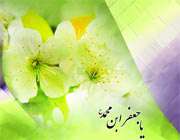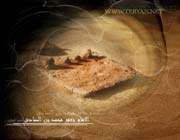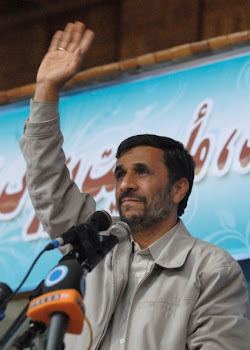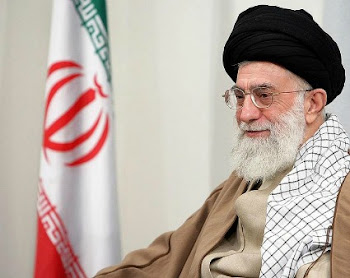| Name: Ja'far ibn Muhammad (a.s.)
Mother: Umm Farwa, the daughter of Qasim bin Muhammad bin Abu Bakr.
Kunniyat (Patronymic): Abu 'Abdillah.
Laqab (Title): Al-Sadiq.
Birth: He was born at Madina in 83 A.H.
Martyrdom: He died of poison in 148 A.H. and is buried at Baqi near his father.
|  |
BIOGRAPHY
Birth of Imam Sadiq(as):
The sun of the existence of Imam jafar as Sadiq (AS) arose from the lap of his mother Umm-e-Farwah on the 17th of Rabiul Awal, 83rd year Hijrah, in the city of Madina. Imam jafar as Sadiq (AS) has the same birth date as that of our Holy Prophet Muhammad (SAW).
Family Backgroung of Imam jafar Sadiq(as):
Imam jafar as Sadiq (AS) has three titles; they are: As-Sadiq, Al-Fadil, At-Tahir
His father Imam Muhammad Baqir (AS) was much happy and pleased by the birth of his son. His mother Umm-e-Farwah was the grand daughter of Muhammad ibn Abi Bakr, who was one of the companions of Imam Ali (AS). Imam Ali (AS) repeatedly said about him that, "Muhammad is my spiritual and moral son." Asma Bint Umais was the mother of Muhammad ibn Abi Bakr, and she was considered to be a pious woman. She was continuously in the service of Hazrat Fatima Zahra (SA) and took pride in it. After the martyrdom of her husband jafar ibn Abi Talib in the Battle of Mu’tah, Asma Bint Umais married Abu Bakr Siddiq and after his death, married to Imam Ali (AS).

Imam jafar as Sadiq (AS) said about her mother, "My mother was one of the pious, faithful and devoted women." Imam jafar as Sadiq (AS) was 15 years of age when his grandfather Imam Sajjad (AS) was martyred and 34 years old when his father Imam Muhammad Baqir (AS) was martyred.
Political Background:
Consequent upon the martyrdom of Imam Hussain (AS) the government of Bani Umayyah was shaken which turned the people into their enemy and pessimist about them. This opened the avenue for the formation of Bani Abbasid government. The gap in between these two powers opened the way for the propagation of Shiia ideology and school of thought. Imam jafar as Sadiq (AS) could, through a learning movement, propagate the learning’s of Islam in such a way to extend and make it reach all the people in the World.

Characteristic of Imam jafar Sadiq (as):
The Characteristic distinctions of Imam jafar as Sadiq (AS)We all know that the conduct of men is the reflection of their inner character and everyone can be recognized by his conduct.
There are only a very few people who do not spill out their conduct and whatever they have in their interior and do not exhibit it. Whatever they have in their hearts kindles the exterior of the electric lamp like an electric switch.
Whole of the life of Imam jafar as Sadiq (AS), like the other Imams (AS), was the enlightened lesson of the real and true Islam. He himself was considered to be the example and specimen of the Islamic ethic, moral and conduct.
You cannot find a father and a son among all the people, of all the tribes who may resemble each other from all the angles of ideas, thoughts, character and conduct. But the family of the Prophet of Islam (PBUH) and his successors all were on the same line and performed their heavenly duty with one aim, one ideology, and did not have any kind of difference in speech, character and ethical conduct.

Ethical value and virtue of Imam Sadiq jafar (as)
About the ethical value and virtue of Imam jafar as Sadiq (AS), it is sufficient that out of four thousands of his students even a single one did not object or criticize upon the moral character and conduct of Imam jafar as Sadiq (AS), and did not find a weak point in it. He was a practical example and specimen for the Muslims with respect to eating, relaxing and resting, walking, speaking, and conducts with others. He had the same social conduct with his friends as he had with his children.
His Life
During the Imamate of the sixth Imam greater possibilities and a more favourable climate existed for him to propagate religious teachings. This came about as a result of revolts in Islamic lands, especially the uprising of the Muswaddah to overthrow the Umayyad caliphate, and the bloody wars which finally led to the fall and extinction of the Umayyads. The greater opportunities for Shi'ite teachings were also a result of the favourable ground the fifth Imam had prepared during the twenty years of his Imamate through the propagation of the true teachings of Islam and the sciences of the Household of the Prophet (sawas).
The Imam took advantage of the occasion to propagate the religious sciences until the very end of his Imamate, which was contemporary with the end of the Umayad, and beginning of the Abbasid caliphates. He instructed many scholars in different fields of the intellectual and transmitted sciences, such as Zararah, Muhammad ibn Muslim, Mu'min Taqi, Hisham ibn Hakam, Aban ibn Taghlib, Hisham ibn Salim, Hurayz, Hisham Kalbi Nassabah, and Jabir ibn Hayyan, the alchemist. Even some important Sunni scholars such as Sufyan Thawri, Abu Hanifah, the founder of the Hanafi school of law, Qadi. l Sukuni, Qadi Abu'l-Bakhtari, and others, had the honour of being his students. It is said that his classes and sessions of instruction produced four thousand scholars of hadith and other sciences. The number of traditions preserved from the fifth and sixth Imams is more than all the hadith that have been recorded from the Prophet (sawas) and the other ten Imams combined.
Towards the end of his life the Imam was subjected to severe restrictions by the Abbasid caliph Mansur, who ordered such torture and merciless killing of many of the descendants of the Prophet (sawas) who were Shi'ite that his actions even surpassed the cruelty and heedlessness of the Umayyads. On his order they were arrested in groups, some thrown into deep and dark prisons and tortured until they died, while others were beheaded or buried alive or placed at the base of or between walls of buildings, and walls were constructed over them.
Hisham, the Umayyad caliph, had ordered the sixth Imam to be arrested and brought to Damascus. Later, the Imam was arrested by Saffah., the Abbasid caliph, and brought to Iraq. Finally, Mansur had him arrested again and brought to Samarrah where he had the Imam kept under supervision, was in every way harsh and discourteous to him, and several times thought of killing him. Eventually the Imam was allowed-to return to Medina where he spent the rest of his life in hid-ing, until he was poisoned and martyred through the intrigue of Mansur.
Upon hearing the news of the imam's martyrdom, Mansur wrote to the governor of Medina instructing him to go to the house of the Imam on the pretext of expressing his condolences to the family, to ask for the Imam's will and testament and read it. Whoever was chosen by the Imam as his inheritor and successor should be beheaded on the spot. Of course the aim of Mansur was to put an end to the whole question of the Imamate and to Shi'ite aspirations. When the governor of Medina following orders, read the last will and testament. He learnt that the Imam had chosen four people rather than one to administer his last will and testament: the caliph himself, the governor of Medina, 'Abdallah Aftah., the Imam's older son and Musa, his younger son. In this way the plot of Mansur failed.






















0 comments:
Catat Ulasan